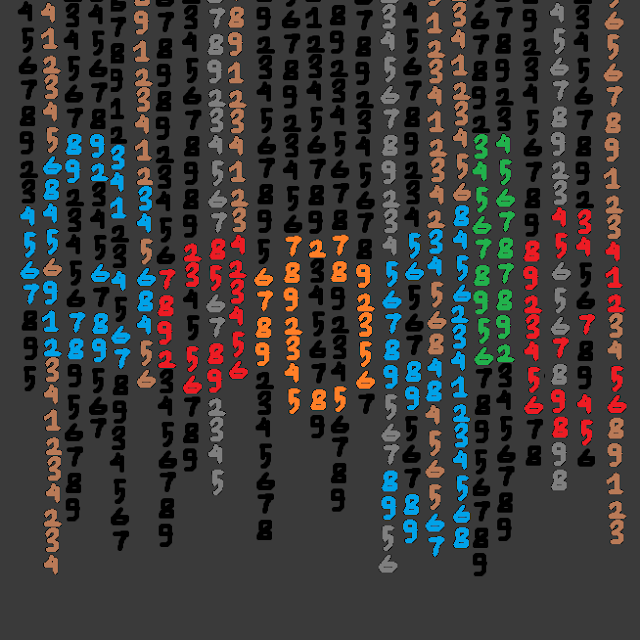How to Make Your Own Piano Covers for YouTube - A Step-by-Step Guide to Turning Keys into Clicks - Blog No. 94
Imagine this: It’s a quiet evening. You sit at your piano, fingers poised over the keys, heart full of emotion. You play a familiar tune—maybe it’s a haunting ballad, a fiery pop anthem, or a nostalgic video game melody. As the last note rings out, you smile. You wish the world could hear it. That, right there, is where the journey begins.
If you’ve ever dreamed of turning your piano playing into YouTube content that inspires, relaxes, or amazes people around the world, you’re not alone. Piano covers are one of the most beloved genres on YouTube. From viral renditions of Billie Eilish songs to chill lo-fi game music covers, pianists have found their niche—and their audience.
This blog post will walk you through everything you need to know to make your own piano covers for YouTube. Whether you’re a bedroom pianist or a classically trained pro, this guide combines storytelling with practical tips, SEO insights, and a sprinkle of music magic.
Related
🎹 Why Piano Covers Thrive on YouTube
Before we dive into how, let’s explore why.
Piano covers are unique. They offer:
-
Emotional Connection: The piano is one of the most expressive instruments.
-
Universal Appeal: Instrumentals can reach global audiences without language barriers.
-
Evergreen Content: Songs from decades ago still rack up views when covered beautifully.
YouTube is the second-largest search engine in the world. People constantly look for piano versions of their favorite songs to relax, study, or feel inspired. That means your talent could be someone else’s perfect background music—or their next favorite video.
🎵 Step 1: Pick the Right Song
Tips for Picking the Right Song:
-
Choose songs you love: Passion translates through the keys.
-
Check search trends: Use tools like Google Trends or YouTube’s search suggest feature.
-
Balance popularity with uniqueness: Cover trending songs early, or niche songs in a way no one else has.
🎯 SEO Tip: Include the full song title and artist in your YouTube title (e.g., “Perfect” by Ed Sheeran – Piano Cover). This boosts discoverability.
🎹 Step 2: Arrange Your Cover
Even if you’re playing an existing song, your arrangement is what makes it yours.
Approaches:
-
Melody + chords: Great for solo performance. You play both the tune and the harmony.
-
Instrumental only: For background or chill vibes.
-
Add flair: Jazz voicings, cinematic build-ups, tempo changes.
🎧 Pro Tip: Listen to multiple covers of the same song. Take notes. What stands out? What falls flat?
Tools to Help:
-
Sheet Music: Try Musicnotes, Musescore, or buy official transcriptions.
-
Ear Training: Use software like Transcribe! or apps like Chord AI to figure out songs by ear.
🛠️ SEO Tip: In your video description, list what makes your version different. (e.g., “This is a slowed-down, emotional arrangement with extra arpeggios in the chorus.”)
🎥 Step 3: Record with Good Audio and Video
If content is king, quality is queen. A beautiful performance can be overlooked if the sound is muffled or the lighting is poor.
Audio Recording
-
Best Option: Use a digital piano with USB/MIDI out and record via a DAW (e.g., GarageBand, FL Studio).
-
Acoustic Piano? Use condenser mics like Audio-Technica AT2020.
-
On a Budget? Use your smartphone + external lav mic. Upgrade later.
🎵 Pro Tip: Clean up background noise and normalize volume in post.
Video Recording
-
Smartphones can work—especially with good lighting and a stable mount.
-
Cameras: A DSLR or mirrorless camera will step up your game.
-
Angles: Use top-down, side, or pedal views for variety.
💡 SEO Tip: Use high-quality thumbnails. Try Canva or Photoshop and include a piano icon, song title, and a still of your hands.
🧑💻 Step 4: Edit and Sync Like a Pro
Don’t underestimate editing. This is where your music becomes a YouTube-worthy experience.
Video Editing Software:
-
Free: DaVinci Resolve, iMovie, Shotcut.
-
Paid: Final Cut Pro, Adobe Premiere Pro.
Sync Audio and Video
-
Align audio waveform with video visually.
-
Crop, cut, and color correct to keep visuals clean and vibrant.
Add Extras:
-
Text overlays (song title, composer)
-
Subtle animations or motion blur
-
Channel watermark
📌 SEO Tip: Use consistent branding—same intro/outro, fonts, or logos to build recognition.
📢 Step 5: Optimize Your YouTube Upload
This is where many musicians drop the ball. YouTube SEO is your best friend.
Title:
-
Format: “Song Name – Piano Cover by [Your Name]”
-
Add keywords like “Emotional,” “Relaxing,” or “Lo-Fi” if applicable.
Description:
Include:
-
Short description of the cover
-
Song credits (composer, artist)
-
Recording setup details
-
Social media links
-
Hashtags (#PianoCover, #RelaxingMusic, #EdSheeran)
Tags:
Use a mix:
-
Song title
-
Artist
-
“Piano Cover”
-
Instrumental
-
Related genres (Pop, Lo-Fi, Classical)
Thumbnail:
Use a custom thumbnail with:
-
Your piano or hands
-
Song name in big, clear font
-
A consistent color scheme or branding
🔎 SEO Bonus Tip: Add closed captions or lyrics (if singing) to help with YouTube’s search algorithm.
📈 Step 6: Promote Your Cover
Don’t just publish—launch it.
Platforms to Promote:
-
Instagram Reels and TikTok (post a short teaser)
-
Reddit (subreddits like r/piano, r/coversongs)
-
Facebook groups (Music covers, Piano lovers)
-
Music blogs (Submit via SubmitHub or direct email)
Email your audience:
If you have a mailing list (even 20 people!), share the story behind your cover. Personal connection matters.
👥 SEO Tip: Engage with comments and pin your own comment with keywords. YouTube tracks engagement!
🔁 Step 7: Stay Consistent and Evolve
The truth is, your first few covers might not blow up. That’s okay. Every big piano cover YouTuber started with zero subscribers. What mattered was consistency and growth.
Try this upload schedule:
-
1 Cover per week
-
1 Short every 3 days
-
Behind-the-scenes stories, bloopers, or practice sessions
Evolve:
-
Take requests from comments.
-
Do seasonal themes (e.g., “Winter Ballads” or “Halloween Soundtracks”).
-
Collaborate with other musicians or animators.
🚀 Pro Growth Tip: Track your analytics. Which videos perform best? Double down on that style or genre.
🧠 Bonus: How to Avoid Copyright Issues
This part is essential.
YouTube has a system called Content ID. It scans uploads for copyrighted material.
How to Cover Songs Legally:
-
Use licensed backing tracks (or none).
-
Use YouTube Music Policies Database to see how a song is treated.
-
Monetization: Some covers will still earn for the original artist—this is normal.
If you want to monetize safely:
-
Use services like We Are The Hits or Loudr to license your covers.
🛡️ Safe Practice: Always give credit in the description.
🎬 Your Next Steps
Here’s your action plan:
-
Pick a song today—one that moves you.
-
Practice and arrange your version with intention.
-
Record it with care, even if it’s just your phone and heart.
-
Edit, upload, and share it with the world.
-
Repeat—every week.
Related
💡 Final Words: Your Piano Can Change Someone’s Day
Remember that people come to YouTube not just to watch, but to feel. A single cover can become a soundtrack to someone’s study session, a breakup, or even their wedding.
Every keystroke is a chance to connect. Don’t wait for perfection—start with passion.
You’ve got a piano. You’ve got a story. Now it’s time to share it.



Comments
Post a Comment